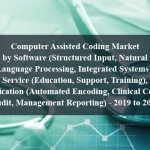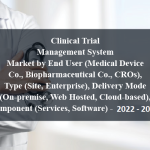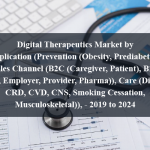OVERVIEW
Research by Global Market Studies has reported a CAGR of 33% for the Brazil, Russia, India, China (BRIC) Telemedicine Market, expecting to expand to a value of USD 290.01 billion by 2028.
Telemedicine refers to the use of telecommunication technology to deliver healthcare services, consultations, diagnosis, treatment, and monitoring of patients at a distance. It involves the exchange of medical information between patients and healthcare providers, enabling remote healthcare delivery and support.
Teleconsultations, remote monitoring, store-and-forward, mobile health apps, telepharmacy, teleradiology, telepsychiatry, and tele-ICU are technologies that enable patients to receive medical advice, manage chronic conditions, and access healthcare services remotely. These technologies improve patient management, access to medications, and reduce stigma.
Market Dynamics
Drivers:
The growing healthcare demand in BRIC countries, particularly in underserved rural areas, is being addressed by telemedicine. Investments in healthcare infrastructure and technology are also increasing, making it easier to implement telemedicine solutions. Telemedicine offers remote monitoring and management of chronic diseases, contributing to market growth.
Government initiatives and policies, such as regulatory frameworks and reimbursement policies, also contribute to telemedicine adoption. Technological advancements, such as 5G networks and wearable health devices, are enhancing telemedicine’s capabilities. The COVID-19 pandemic has further boosted the market by promoting healthcare delivery while minimizing physical contact.
Opportunities:
Teleconsultations, telemonitoring, E-Health Records, mobile health apps, AI-driven diagnostics, remote prescription services, second opinion services, telepharmacy, tele-ICU and telestroke services, mental health support, healthcare platforms, and telehealth for elderly care are all ways healthcare professionals can connect with patients remotely. Teleconsultations allow healthcare professionals to connect patients with healthcare professionals via video, phone, or chat, while telemonitoring monitors patients’ vital signs, chronic conditions, and medication adherence.
E-Health Records securely store and manage patient information, while mobile health apps offer health information, appointment scheduling, and medication reminders. AI-driven diagnostics utilizes artificial intelligence and machine learning for medical imaging analysis. Telepharmacy provides prescription dispensing and medication counseling, while tele-ICU and telestroke services offer remote monitoring and consultation for intensive care units.
Restraints:
Telemedicine faces several challenges, including regulatory hurdles, limited internet access, the digital divide, data privacy and security concerns, cultural and language barriers, inadequate healthcare infrastructure, resistance from healthcare professionals, reimbursement issues, technical issues, and medico-legal concerns. Inconsistent or unclear regulations and licensing requirements can hinder the growth of telemedicine, while limited internet connectivity in rural and remote areas of BRIC countries can limit its reach.
Socioeconomic disparities and the digital divide can prevent underserved populations from accessing telemedicine services. Cultural and language barriers can affect effective communication and trust between patients and providers. Insufficient healthcare infrastructure can limit the effectiveness of telemedicine services in certain areas. Technical issues, such as platform compatibility problems and connectivity disruptions, can disrupt the patient experience. Medico-legal concerns and patient acceptance can also hinder telemedicine adoption. The absence of standardized protocols and guidelines can lead to inconsistencies in care delivery and quality.
Regional Information:
Brazil : Brazil’s telemedicine market is expanding, particularly in remote areas, with key providers like Teladoc Health, BoaConsulta, and Conexa Saúde. The government is implementing regulations, but challenges include internet connectivity and healthcare infrastructure disparities.
Russia: Russia’s telemedicine market is expanding, focusing on remote healthcare services, teleconsultations, and telemonitoring. Key players include Yandex.Health, Doctis, and Dr. Felicia. Government aims to improve legal framework.
India: India’s telemedicine market is growing, with key players like Practo, Apollo Telemedicine, and Portea Medical. Government regulations emphasize patient privacy and data security, but challenges include addressing digital divide and integrating telemedicine into healthcare.
China: China’s telemedicine market is robust, with key players like Ping An Good Doctor, WeDoctor, and AliHealth offering online consultations, remote monitoring, and AI-driven diagnostics. Challenges include data privacy, quality care, and regional healthcare disparities.
Recent Developments:
• In August 2022, Hicuity Health launched tele-ICU services at MUSC Health Columbia Medical Center Downtown in Columbia, South Carolina. The new service launch draws upon MUSC Health’s long-standing collaboration with Hicuity Health which delivers telemedicine services to hospitals across the state.
• In April 2022, Bayer launched 27 telemedicine centers in 12 districts across eight states in India over the next two years through Bayer Foundation India.
Key Players:
Allscripts Healthcare Solutions Inc., Hicuity Health, BioTelemetry, Bayer , Medtronic, Koninklijke Philips NV, Aerotel Medical Systems (1998) Ltd, AMD Global Telemedicine Inc., and SOC Telemed
Frequently Asked Questions
1) What is the projected market value of the Brazil, Russia, India, China (BRIC) Telemedicine Market?
– The Brazil, Russia, India, China (BRIC) Telemedicine Market is expected to reach a value of USD 290.01 billion by 2028.
2) What is the estimated CAGR of the Brazil, Russia, India, China (BRIC) Telemedicine Market over the 2023 to 2028 forecast period?
– The Brazil, Russia, India, China (BRIC) Telemedicine Market is expected to grow at a CAGR of approximately 33% from 2023 to 2028.
3) Who are the key players in the Brazil, Russia, India, China (BRIC) Telemedicine Market?
– Allscripts Healthcare Solutions Inc., Hicuity Health, BioTelemetry, Bayer , Medtronic, Koninklijke Philips NV, Aerotel Medical Systems (1998) Ltd, AMD Global Telemedicine Inc., and SOC Telemed.
4) What are the drivers for the Brazil, Russia, India, China (BRIC) Telemedicine Market?
– Telemedicine is addressing growing healthcare demand in BRIC countries, particularly rural areas. Investments in infrastructure and technology, government initiatives, 5G networks, and wearable health devices are enhancing its capabilities. The COVID-19 pandemic has further boosted the market..
5) What are the restraints and challenges in the Brazil, Russia, India, China (BRIC) Telemedicine Market?
– Telemedicine faces challenges like regulatory hurdles, limited internet access, digital divide, data privacy, cultural barriers, inadequate healthcare infrastructure, resistance from professionals, reimbursement issues, technical issues, and medico-legal concerns, limiting its growth.
6) What are the key applications and offerings of the Brazil, Russia, India, China (BRIC) Telemedicine Market?
– Teleconsultations, remote monitoring, store-and-forward, mobile health apps, telepharmacy, teleradiology, telepsychiatry, and tele-ICU are technologies that enable patients to receive medical advice, manage chronic conditions, and access healthcare services remotely.
7) Which region is expected to drive the market for the forecast period?
– Asia Pacific has the highest value share in the global market and is expected to dominate shares in forecast period.
Why Choose Us?
Insights into Market Trends: Global Market Studies reports provide valuable insights into market trends, including market size, segmentation, growth drivers, and market dynamics. This information helps clients make strategic decisions, such as product development, market positioning, and marketing strategies.
Competitor Analysis: Our reports provide detailed information about competitors, including their market share, product offerings, pricing, and competitive strategies. This data can be used to inform competitive strategies and to identify opportunities for growth and expansion.
Industry Forecasts: Our reports provide industry forecasts, which will inform your business strategies, such as investment decisions, production planning, and workforce planning. These forecasts can help you to prepare for future trends and to take advantage of growth opportunities.
Access to Industry Experts: Our solutions include contributions from industry experts, including analysts, consultants, and subject matter experts. This access to expert insights can be valuable for you to understand the market.
Time and Cost Savings: Our team at Global Market Studies can save you time and reduce the cost of conducting market research by providing comprehensive and up-to-date information in a single report, avoiding the need for additional market research efforts.












